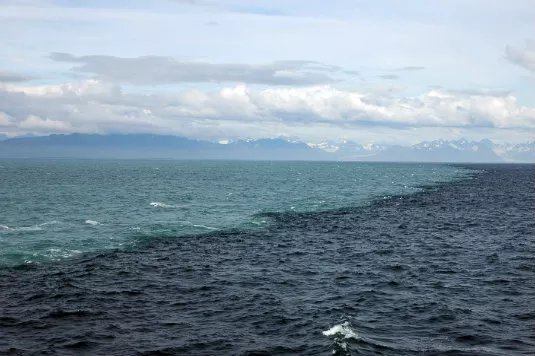The idea of oceans blending together might sound like a natural phenomenon—two vast bodies of water coming together as one. But in reality, the Pacific and Atlantic Oceans don’t blend as easily as you might think. Although they meet in certain places, especially in the Southern Ocean and at the tip of the Americas, the way they interact is more complex and fascinating than just mixing.
Where Do the Pacific and Atlantic Oceans Meet?
One of the most famous places where the Pacific and Atlantic Oceans meet is at the Drake Passage near Antarctica. This passage lies between the southern tip of South America and Antarctica, where the waters of the Pacific and Atlantic come face-to-face. Another key location is the Bering Strait, which separates Alaska from Russia, where cold waters from the Arctic mix with the warmer Pacific and Atlantic waters.
But what happens when these oceans meet? Do they just blend together seamlessly? Surprisingly, no.
Why Don’t the Oceans Blend?
When the Pacific and Atlantic Oceans meet, the differences in water temperature, salinity (salt content), and density prevent the two oceans from blending instantly. The waters from each ocean remain relatively distinct, with noticeable boundaries between them.
For example, the cold waters of the Pacific have a lower salinity compared to the Atlantic’s warmer waters, which causes them to layer rather than mix. This phenomenon is often visible from the air, where you can spot a visible line in the water, clearly marking the meeting point of the two oceans. It’s a stark visual reminder of how distinct these bodies of water remain, despite their proximity.
The Ocean Currents
One of the major factors in preventing these oceans from blending is the powerful ocean currents that run through each. The Gulf Stream, a warm ocean current from the Atlantic, moves northward toward the Arctic, while the Kuroshio Current in the Pacific flows in the opposite direction. These currents act as barriers, preventing a complete mix of the waters.
Furthermore, the unique flow patterns of the Antarctic Circumpolar Current (ACC) also contribute to the separation of waters. The ACC flows westward around Antarctica, creating an oceanic divide that influences the movement of water in both the Pacific and Atlantic Oceans.
The Importance of Oceanic Boundaries
Despite the oceans not blending together completely, the meeting of the Pacific and Atlantic Oceans plays a significant role in global climate and weather systems. The way these waters interact with each other and with the atmosphere helps regulate temperature and weather patterns across the planet. Ocean currents and the mixing (or lack thereof) can have far-reaching effects on marine life, ecosystems, and even global weather events like El Niño and La Niña.
Why Is This Important?
Understanding how the Pacific and Atlantic Oceans interact is crucial for marine science, climate studies, and the health of our planet’s ecosystems. The differences in salinity and temperature between these oceans affect everything from ocean circulation to the migration of marine species.
Interestingly, while these oceans don’t blend fully, their meeting points are rich in biodiversity. The areas where the waters of the Pacific and Atlantic come together often become hotspots for unique marine life that thrives in these dynamic environments.
While the Pacific and Atlantic Oceans may not blend in the traditional sense, their meeting points are a powerful reminder of nature’s complexity. It’s not just about two bodies of water; it’s about how they shape each other, how they interact with the Earth, and how they sustain life across the planet.









